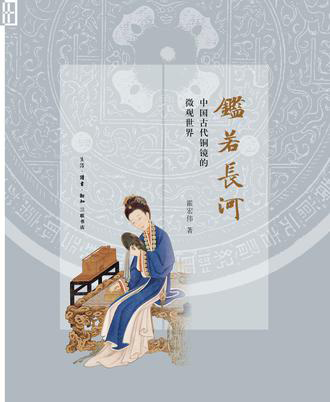Mirror: history in solid form

History Reflected in Mirrors: A Microscopic World of Bronze Mirrors in Ancient China
Author: Huo Hongwei
Publisher: SDX Joint Publishing Company
In November 2017, my new work History Reflected in Mirrors was published. Looking back on the creation of the book, although it is full of hardship, there is no shortage of fun and pleasure.
While writing this book, I found that its major feature is blending knowledge of diverse academic fields. It is based on archeology, trying to merge artifacts, history, literature and art, and integrates all kinds of information related to bronze mirrors. It is a bit like the stewed local cuisine in my hometown of Luoyang, which usually mixes various kinds of vegetables in a pot. This kind of style seems to come easily to me, but it indeed has many problems to deal with at the same time and requires constant exercise to maintain.
For ancient people, bronze mirrors have both material and spiritual meaning. Mirrors can not only reflect people’s looks, but also indicate their virtues. They also help to bring in good luck and ward off misfortune. Later generations are familiar with the philosophical remarks of Li Shimin, the Emperor Taizong of Tang: “Looking into a bronze mirror, one could adjust dressing. By setting history as a mirror, one knows the potential ups and downs of a dynasty, and by setting a single person as a mirror, one can understand what he has gained and lost.” The poet Bai Juyi introduced these words into his poem Wrought Mirror: “Taizong often uses history and people as mirrors, and never use a bronze [mirror] to see his appearance.” In short, history is a mirror. Mirrors are solidified history. It can reveal changes in appearance and judge the rise and fall of the country.
Have bronze mirrors been unearthed at the Chang’an City site of the Western Han Dynasty? Some scholars believe that there are no bronze mirrors at the city site. Having sifted through a large amount of data, I discovered that some pieces of bronze mirrors have been unearthed inside and outside the city. What is the relationship between bronze mirrors and ancient capitals? This issue has rarely been considered, because people seem to be more concerned about the shape of a complete, beautifully decorated bronze mirror, while ignoring mirror debris in general. As archaeologists, we should not only pay attention to the subject matter and fineness of the bronze mirror ornamentation, but also focus on the unearthed information and academic value of the mirror.
How can we study history through bronze mirrors? My research is divided into two aspects. On the one hand, I picked a special topic of a small scale which spans a long period. I took bronze mirrors as the breakthrough point and history as the foothold, so that a delicate device like bronze mirrors could be examined against a grand historical background. For example, through the analysis of the mirrors unearthed from the two Han-dynasty tombs in Luoyang, I demonstrated Dong Zhuo’s rebellion in the late Eastern Han Dynasty that once greatly impacted Chinese historical progress. On the other hand, the book is not written in a traditional format of epigraphy studies, but researches mirrors with an archaeological perspective. It takes “interpreting history through materials and thus to see people” as its research goal, associating bronze mirrors with the lives of ancient people.
(edited by SUI JINGJING)
